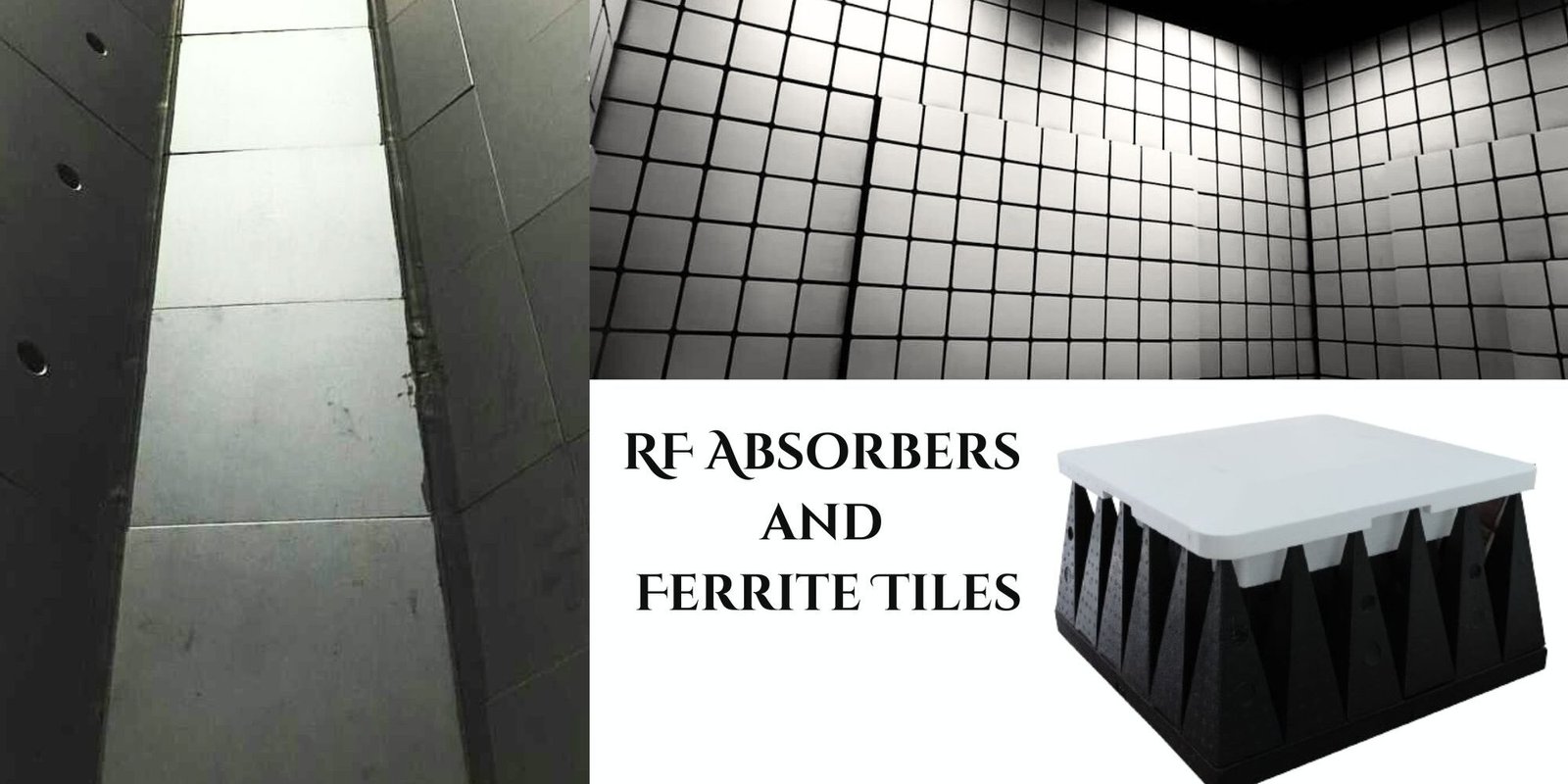Role of Ferrites and RF absorbers in EMC Testing
Electro-magnetic Compatibility (EMC) Testing is critical for ensuring that electronic devices run properly without conflicting with various other devices. This testing helps to prevent issues like signal interference and ensure compliance with regulatory standards. Two essential components in EMC testing are ferrite tiles and polypropylene hybrid RF absorbers. DMC manufactures these products which are vital in managing and controlling electromagnetic waves in testing environments.
Ferrite Tiles in EMC Testing
We at DMC manufacture ferrite tiles, which are made from a type of ceramic material that contains iron oxide. They are frequently used in EMC Testing environments for their capacity to absorb electromagnetic waves at lower frequencies up to 1 GHz Here’s how they contribute to EMC Testing.
Absorption of Electromagnetic Waves
Ferrite tiles absorb electromagnetic waves, preventing them from reflecting off the surface and causing interference. This absorption helps to create a regulated Testing environment, which is necessary for accurate EMC dimensions.
Reduction of Reflections
In EMC Testing chamber reflections from walls, floors, and ceilings can distort test results. Ferrite tiles, when mounted on these surfaces, reduce these reflections. This ensures that the measurements reflect the device’s real electromagnetic emissions or susceptibility.
Material Properties
Polypropylene absorbers are closed-cell frameworks with a class 5 clean space rating to check satellite and space antenna test applications.
Wide Frequency Range
Ferrite tiles are reliable across a wide regularity array, normally from 30 MHz to several GHz. This wide range makes them versatile for various types of EMC tests, consisting of emissions and resistance tests.
High power handling
The physical composition of polypropylene absorbers offers a high power handling capacity of up to 4.8 kW/ m2 in the operating frequency range.
Easy Installation
Polypropylene absorbers function as plug-and-pull methods, meaning, that each tip of the absorber can be easily removed and replaced without the need to replace the whole batch of absorbers.
These absorbers do not need adhesive to be installed, instead, they can be nailed into layer of plywood and Ferrites back wall to provide sufficient impedance matching.
Polypropylene Hybrid RF Absorbers in EMC Testing
DMC manufacture Polypropylene hybrid RF absorbers, another critical component in EMC Testing. These absorbers integrate polypropylene foam with other materials to improve their efficiency. Here’s what they offer in EMC testing:
Enhanced Absorption Properties
Polypropylene hybrid RF absorbers are designed to absorb electromagnetic waves effectively. The combination of materials enhances their absorption properties, making them highly efficient at reducing reflections and interference.
Durability
These absorbers are durable and resistant to environmental factors like humidity and temperature changes. This durability ensures long-term performance and reliability in EMC testing environments.
Versatile Applications
Polypropylene hybrid RF absorbers can be used in various EMC testing arrangements consisting of standard chambers, semi-anechoic chambers, and open-area test sites. Their versatility makes them a valuable for wide variety of EMC tests.
Conclusion
Ferrite tiles and polypropylene hybrid RF absorbers play crucial roles in EMC testing by developing regulated environments that have certain precise dimensions. Ferrite tiles excel at absorbing electromagnetic waves and reducing reflections across a band frequency range, making them a staple in EMC chambers. Polypropylene hybrid RF absorbers, with their enhanced absorption properties and versatility, are essential for testing frequency devices.
Together, these materials help engineers and technicians ensure that electronic devices meet regulatory standards and function correctly without causing harmful interference. As technology advances and devices become more complex, the importance of effective EMC testing materials like ferrite tiles and polypropylene hybrid RF absorbers will only continue to grow.

